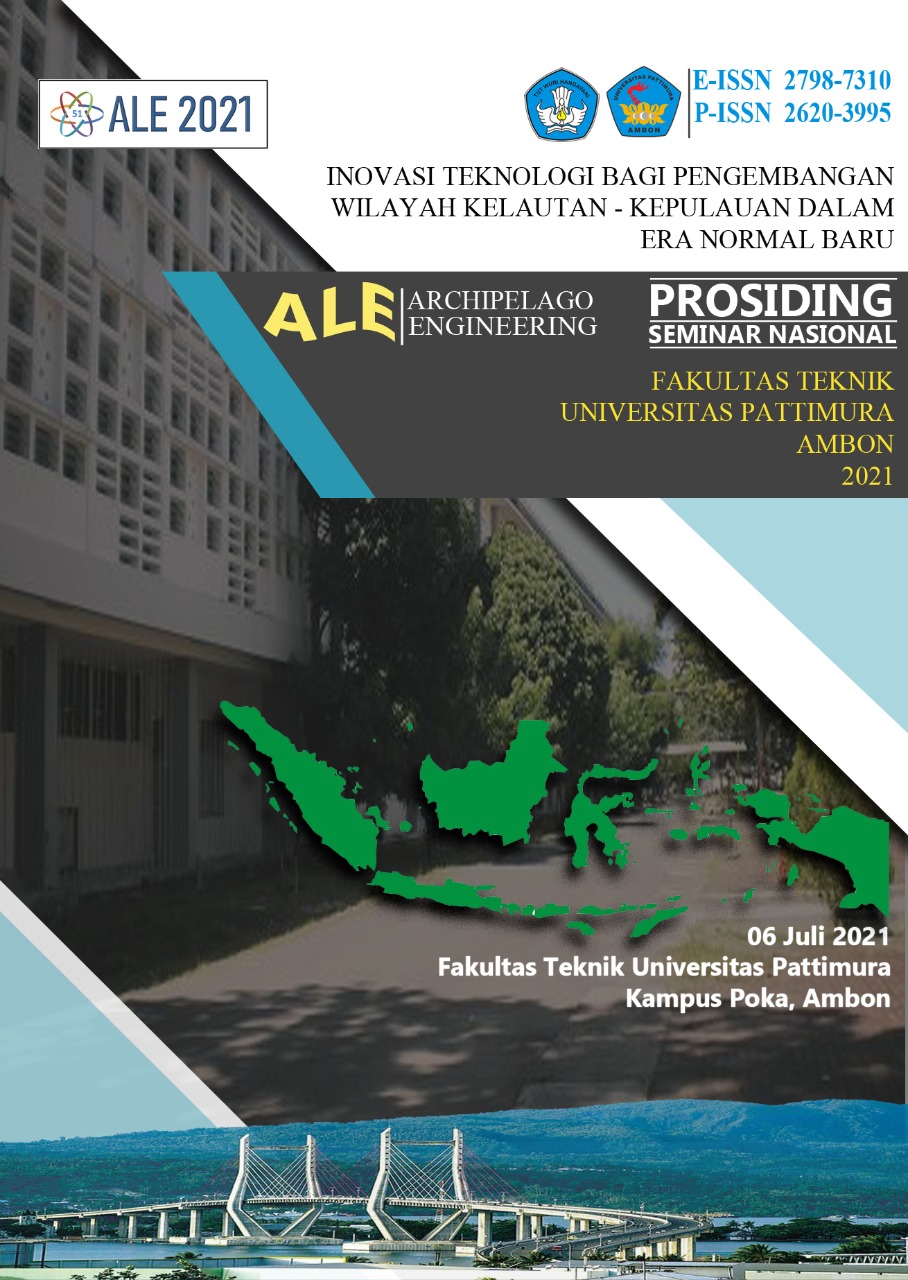ANALISA TITIK KRITIS GERAKAN ROLL KAPAL TRIMARAN UNTUK DIAPLIKASI PADA KAPAL IKAN PURSE SEINE
Abstract
The marine fisheries catching and processing industry are considered vulnerable to the effects of extreme weather at sea. Global warming effects and El Nino and La Nina have a significant impact on the upwelling process, which impacts the lifestyle and environment of marine biota, including pelagic fish, which is one of the most important contributors to the shipping industry. Extreme weather conditions, with wave heights ranging from 1 to 5 meters, dominate the waters of Maluku. In extreme sea conditions, most fishers choose not to go fishing, not because there are no fish at the fishing grounds, but to avoid mishaps at sea. This research aimed to analyze the critical point of ship roll motion and ship stability. The hull shape employed in this study was a monohull fishing vessel and a trimaran fishing vessel with the same displacement of 21,1 tons. In extreme weather conditions, the Maxsurf software was used to analyze the ship's response, especially the critical point of the ship's roll motion. The I.M.O. Standard was utilized to calculate the ship's stability. The operational speed of the ship was v = 3 knots, with fluctuations in wave angle of incidence between 00 - 1800. Wave heights of 1,0; 2,0; 3,0, and 0,4 meters represent extreme weather conditions in Maluku waters' fishing grounds. The findings revealed that the trimaran hull type had better stability where the inclination angle of trimaran vessel stability was 480 while the monohull was 410. The trimaran fishing vessel was able to withstand a wave height of 3 meters with an inclination angle of 32,560. In comparison, the monohull fishing vessel was able to survive at a wave height of 2 meters with an inclination angle of 24,690. Monohull fishing vessel had a maximum limit of roll motion at wave directions 82 and 99 with a wave height of 3 m, and it reached at the critical point at angles of 43 and 138, at the height of 4 m. Meanwhile, the trimaran fishing vessel had a critical point at a wave angle of 760 and 1000 with a wave height of 4 meters. In the area between those two angles, monohull and trimaran fishing vessels will lose the balance (stability) of the roll motion, resulting in capsize.
Downloads
References
[2] Bhattacharyya, Rameswar (1978). Dynamics of Marine Vehicles. John Wiley and Sons. U.S.A.
[3] Hughes, G (1954), "Friction and Form Resistance in Turbulent Flow and a Proposed Formulation for Use in Model and Ship Correlation", Trans I.N.A., Vol. 96.
[4] Kurultay, A.A.: 2003. Sensitivity analysis of the seakeeping behavior of trimaran ships. MSc Thesis, Naval Postgraduate School, Monterey, California (U.S.A.) (2003).
[5] Schneekluth, V. Bertram. 1998. Ship Design for Efficeincy and Economy (second edition). Reed Educational and Professional Publishing Ltd . Great Britain;
[6] Luhulima R.B, Utama, I.K.A.P. Selecting Mono- And Multi-Hull Passenger Vessels For Moluccas Waters: Resistance/Powering And Seakeeping Evaluation. The 13th International Conference on QiR, 25-28 June 2013. Jogjakarta. Indonesia (2013).
[7] Luhulima, R.B. Studi Karakteristik Hambatan Dan Seakeeping Kapal Trimaran Pada Perairan Tenang Dan Bergelombang. Buku Disertasi-S3 Teknik Perkapalan, Fakultas Teknologi Kelautan ITS.Surabaya.2016
[8] Schneekluth, V. Bertram. 1998. Ship Design for Efficeincy and Economy (second edition). Reed Educational and Professional Publishing Ltd . Great Britain;
[9] Taggart, R. 1980. Ship Design and Construction. New York: The Society of Naval Architects and Marine Engineers;
[10] Maxruf Manual, 2018.;
Copyright (c) 2021 Fella Gaspersz, Richard B. Luhulima

This work is licensed under a Creative Commons Attribution-ShareAlike 4.0 International License.
An author who publishes in the ALE Proceeding agrees to the following terms:
- Author retains the copyright and grants ALE Proceeding the right of first publication of the work simultaneously licensed under the Creative Commons Attribution-ShareAlike 4.0 License that allows others to share the work with an acknowledgment of the work's authorship and initial publication in this journal.
- Author is able to enter into separate, additional contractual arrangements for the non-exclusive distribution of the journal's published version of the work (e.g., post it to an institutional repository or publish it in a book) with the acknowledgment of its initial publication in this journal.
- Author is permitted and encouraged to post his/her work online (e.g., in institutional repositories or on their website) prior to and during the submission process, as it can lead to productive exchanges, as well as earlier and greater citation of the published work (See The Effect of Open Access).
Read more about the Creative Commons Attribution-ShareAlike 4.0 Licence here: https://creativecommons.org/licenses/by-sa/4.0/.






